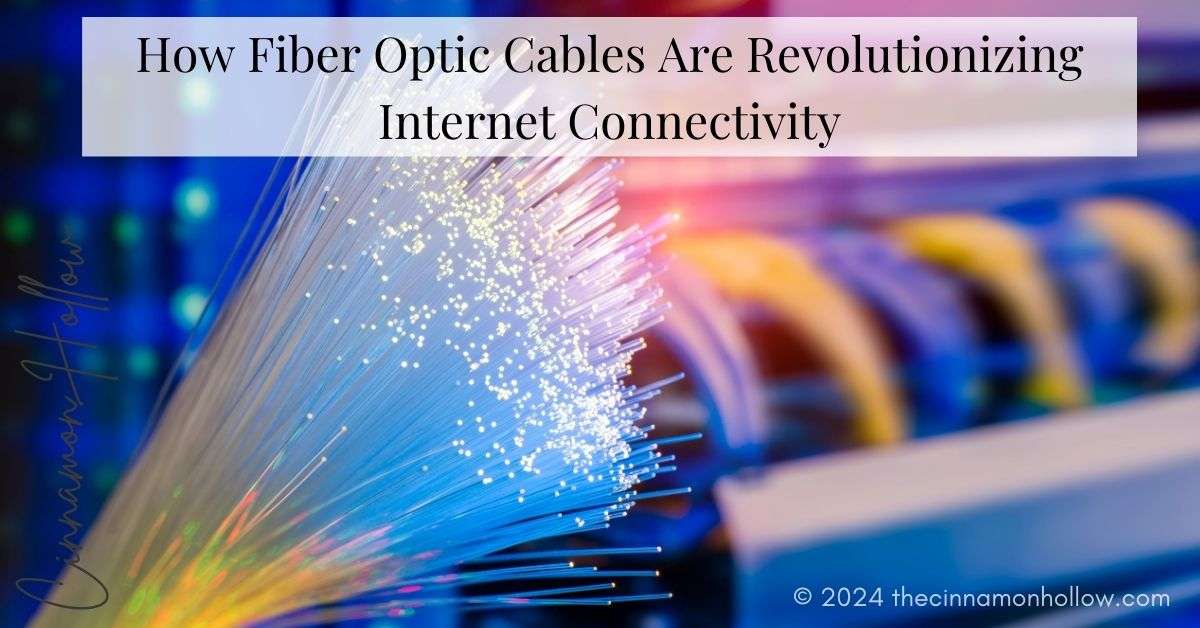Introduction To Fiber Optic Cables
Fiber optic cables are revolutionizing how we connect to the internet by offering faster and more reliable connections. Unlike traditional copper cables, fiber optic cables use light to transmit data, resulting in higher speeds and improved performance. In today’s digital age, having a robust internet connection is paramount, and companies like Cable Ex are at the forefront of providing these cutting-edge solutions. The shift to fiber optics represents a significant advancement in telecommunications, driven by the growing demand for faster, more stable internet connections for data-intensive applications like streaming, gaming, and remote work. Fiber optic cables offer significant improvements over older technologies by providing higher speeds, excellent reliability, and superior performance, addressing the increasing need for robust, high-speed connectivity.
Advantages Of Fiber Optic Cables
- High Speed: Fiber optic cables can handle significantly higher bandwidth, making them ideal for high-speed internet. This results in quicker downloading and uploading speeds, which is crucial for watching HD videos, video calling, and playing games online.
- Reliability: They are less prone to interference from electromagnetic signals, ensuring a more stable and consistent connection. This dependability is crucial for companies that depend on uninterrupted internet service for their daily activities and for individuals who require reliable connections for working remotely or studying online.
- Long Distance Transmission: Fiber optic cables can send data over extended distances without losing quality. However, copper cables lose signals over long distances, while fiber optics are better for intercontinental data transmission and local networks.
How Fiber Optic Cables Work
The technology behind fiber optic cables involves sending data as pulses of light through strands of glass or plastic fibers. Each fiber is no thicker than a human hair and can carry vast amounts of data at incredibly high speeds. The science behind fiber optics is fascinating and complex, involving principles of physics and advanced engineering.
- Basic Principles: Fiber optic cables operate on the principle of total internal reflection. Light signals travel through the fiber’s core, bouncing off the walls at shallow angles, thus staying within the core. This method allows data transmission at phenomenal speeds and over long distances with minimal loss. The fibers are typically bundled together and protected by layers of cladding and insulation to enhance durability and performance.
Applications In Various Industries
Fiber optic technology is not limited to internet connectivity. It has many applications, including medical equipment, telecommunications, and space exploration. These versatile uses highlight the importance of fiber optics in modern technology and its potential to drive innovation across multiple sectors.
- Medical Field: Fiber optics are used in endoscopes for minimally invasive surgeries, allowing doctors to view the human body with high precision and minimal discomfort to the patient. They are also used in medical imaging and diagnostic equipment, enhancing the accuracy and efficiency of medical procedures.
- Telecommunications: They form the backbone of internet infrastructure, supporting massive data transfers globally. Fiber optic cables enable high-speed data transmission and low-latency connections, crucial for modern communication networks, including 5G technology.
- Space Exploration: Fiber optics are utilized in spacecraft to ensure reliable communication and data transmission. The technology’s resilience to harsh environments and electromagnetic interference makes it ideal for space missions, where maintaining communication is critical.
Comparing Fiber Optic Cables To Traditional Cables
The differences between fiber optic cables and traditional copper cables are stark. Fiber optic cables offer higher data rates, greater security, and better resistance to electromagnetic interference. Copper cables, while cheaper, cannot match fiber optics’ performance in modern high-speed applications.
- Data Rates and Bandwidth: Fiber optics can support data rates up to 100 Gbps, whereas traditional copper cables max out at around 10 Gbps. This disparity makes fiber optics the go-to choice for applications requiring high bandwidth and fast data transfer. Fiber optic cables are future-proof, meaning they can accommodate increasing data demands without requiring frequent upgrades.
Conclusion: The Future Of Connectivity
In summary, fiber optic cables are the future of internet connection. Their unmatched benefits lie in their speed, dependability, and ability to transmit over long distances. With the progression of technology, fiber optic cables will play a growing role in our everyday lives, presenting unparalleled possibilities for progress in different areas. The potential of fiber optics is vast and constantly growing, from facilitating cutting-edge medical procedures to supporting global communication networks and space exploration.


